Top Strategies to Prevent and Relieve Cramps in Watersports
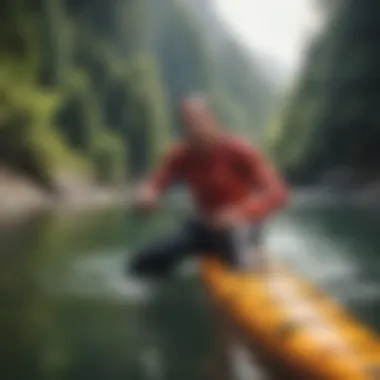
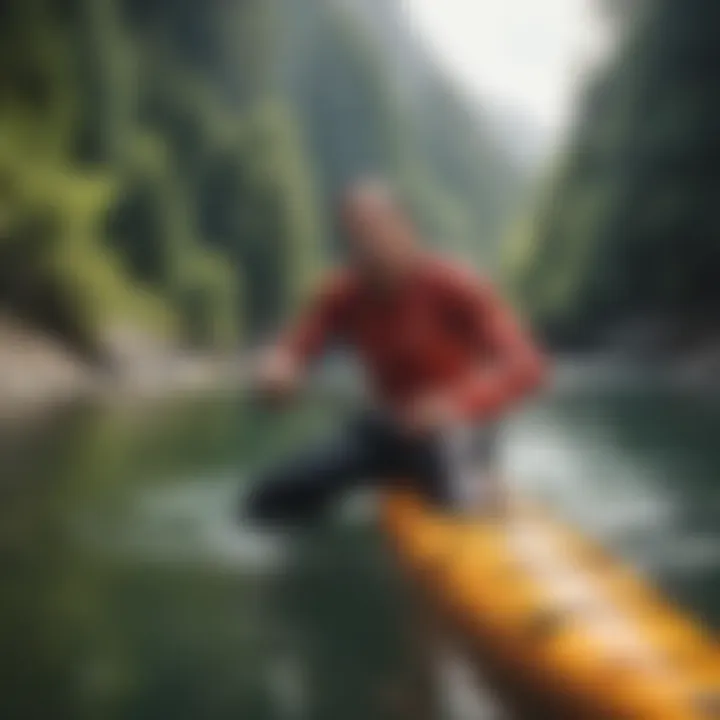
Intro
Cramps can be a real buzzkill when you're out on the water. Imagine you're riding the waves, everything feels right until that sudden tightening in your calf catches you off guard. You know, that sensation that stops you dead in your tracks? It's common, unfortunately, but understanding what's behind it can really help in tackling the issue head-on. The ocean, lakes, or rivers—wherever your watersport adventures take you, cramps can be an unwelcome companion.
In this guide, we will delve into various ways to prevent, relieve, and manage cramps. We’ll cover the importance of having the right gear, effective techniques to keep your performance high, and everything else to make your time on the water enjoyable and cramp-free. It's time to learn how to keep those pesky muscle contractions from becoming a pattern in your aquatic escapades!
Gear Recommendations
To keep cramps at bay, having the right gear is paramount. Whether you're a novice just dipping your toes in the watersport arena or a seasoned pro, the equipment you choose plays an integral role in your performance and comfort. Let’s break this down.
Essential Gear for Beginners
If you are new to watersports, you might want to start with essential gear that supports your movements and helps prevent muscle fatigue:
- Proper Footwear: Investing in well-fitting water shoes or sandals can provide necessary support and grip.
- Hydration Packs: Dehydration can increase cramping risk, so a hydration pack ensures you’re always sipping water—even amidst waves.
- Buoyancy Mix: Consider getting a wetsuit or life jacket that offers good buoyancy and support.
- Lightweight Accessories: Keep your accessories to a minimum to reduce the strain on your muscles.
Advanced Equipment for Professionals
If you’re a regular in the waters and pushing your limits, the following gear can significantly enhance your performance:
- Performance Swimsuits: These are designed to provide muscle compression and support, reducing the risk of cramps.
- Premium Paddles/Boards: If surfing or paddleboarding, select boards or paddles tailored to your body mechanics.
- State-of-the-Art Hydration Systems: Advanced hydration systems can be customized for temperature regulation and ease of access, ensuring optimal hydration.
- Wearable Technology: Devices that track performance and hydration levels can help you manage your physical states efficiently.
Techniques and Tips
Once you have your gear sorted, it's time to look at techniques that can keep cramps at bay. It’s more than just a matter of physical prep; incorporating these practices into your routine will serve you well.
Skill Improvement Strategies
Enhancing your skills can often lead to a significant decrease in muscle trauma and cramps:
- Gradual Training: Increase the intensity and duration of your sessions slowly to allow your body to adapt.
- Practice Stretching: Engaging in warm-up routines and cool-down stretches can greatly minimize your cramping risk.
- Focus on Core Strength: Strong core muscles can help maintain proper body positioning on the water, reducing strain on limbs.
Safety Practices and Guidelines
Adhering to sound safety measures can also bolster your defenses against cramps:
- Stay Hydrated: Drink water before, during, and after your activity. Keeping your body hydrated is probably the simplest way to prevent cramps.
- Listen to Your Body: Pay attention to any signs of fatigue or discomfort. If you feel it coming on, take a break.
- Avoid Cold Water Immersion: Sudden temperature shifts can sometimes lead to cramps. Acclimate your body first before engaging fully.
Cramps don’t have to dictate your love for watersports. With the right gear and a solid game plan, you can conquer the waves without interruptions.
By equipping yourself with the correct gear and learning effective relief techniques, enjoying your time on the water becomes a whole lot easier. After all, the ocean is vast and full of possibilities—cramps shouldn’t hold you back from experiencing all it has to offer.
Prolusion to Cramps in Watersports
Cramps can throw a wrench in the most skillful watersport endeavors. Whether a day on the board or navigating the waves in a kayak, cramps not only disrupt activities but can lead to deeper concerns, affecting overall performance and safety. Knowing what causes cramps and how to tackle them is vital for anyone who fancies themselves in the great expanse of water.
Definition and Types of Cramps
Cramps are involuntary muscle contractions that result in sharp pain and discomfort, often leaving athletes immobilized for a short period. Different kinds of cramps may rear their heads:
- Muscle Cramps: These are the most common, affecting the muscles being used most—think of those calves starting to seize when paddling hard.
- Heat Cramps: Usually a product of dehydration and loss of essential salts, these tend to occur in hot conditions where one is sweating profusely.
Understanding these individual types highlights the variety of potential issues athletes may face while navigating water sports, setting the stage for effective relief strategies.
Impact of Cramps on Performance
The repercussions of cramps can be broad. Not only can they halt momentum, but they also can lead to anxiety about the activity.
- Reduction in Ability: Experiencing a cramp can mean the difference between sticking that landing after a jump or taking a tumble. The unexpected pain can diminish one’s confidence in performing complex maneuvers.
- Increased Risk of Injury: Trying to push through the pain can lead to poor form or misalignment, which sets the stage for injuries that could sideline someone for much longer.
- Psychological Effects: Cramps can make athletes cautious, which may hinder not only their performance but also their enjoyment of the sport.
"Success in watersports is not just about skill; it also relies heavily on physical readiness and the ability to manage unforeseen events like cramps."
Understanding cramps fully allows athletes to respond better when faced with discomfort, ultimately leading to a more gratifying experience on the water.
Common Causes of Cramps
Understanding common causes of cramps is pivotal for anyone engaged in watersports. Cramps not only disrupt your enjoyment but can also significantly impair performance. Identifying the reasons behind cramps can help you take proactive measures, thus making your experience on the water more pleasant and less physically taxing.
Dehydration and Electrolyte Imbalances
One of the main culprits of cramps is dehydration, often accompanied by electrolyte imbalances. When the body lacks adequate fluids, it starts pulling from muscle cells, leading to contractions and spasms. Sodium, potassium, calcium, and magnesium are vital for maintaining muscle function and balance. When these electrolytes run low, often due to sweating heavily or not replenishing fluids while out on the water, muscle cramps can pop up like pesky weeds.


To mitigate this, it’s crucial to drink water before, during, and after activities. It might be wise to add sports drinks that contain electrolytes, especially during long stints on the water. Just quenching your thirst isn’t enough when you’re sweating buckets.
Muscle Fatigue and Overexertion
Another significant factor is muscle fatigue, which often stems from pushing your body beyond its limits. In watersports, the continuous use of specific muscle groups can lead to overexertion. For instance, while kayaking, if one arm consistently does the heavy lifting—quite literally—it can tire out quickly. Fatigued muscles are more prone to cramping since they cannot handle sudden or prolonged pressure.
Mindfully increasing your workout intensity can be a game changer. It’s about sharpening the balance between excitement and caution. Consider alternating muscle groups during your training to avoid overworking any single area. This way, your body’ll have a fair chance to recover and flourish over time without sending cramps to crash the party.
Poor Stretching and Warm-up Techniques
Lastly, neglecting proper stretching and warm-up techniques before engaging in watersports can lead to cramps. You wouldn’t jump straight into a freezing pool, would you? The same principle applies to your muscles. A thorough warm-up prepares your body for demanding activities, enhancing circulation and flexibility.
Think about it—how many times have people grimaced at the thought of a few simple stretches before hitting the waves? A comprehensive routine should not be seen as optional. Including stretches that target legs, arms, and lower back—the heavy lifters in most watersports—can work wonders for preventing cramps.
"An ounce of prevention is worth a pound of cure."
Taking the time to warm up might seem tedious but it pays dividend in reducing the likelihood of cramps, allowing you to leave the shoreline feeling prepared rather than hobbled.
Understanding these causes can equip you with the tools to stave off cramps. Educating yourself offers the possibility to enjoy watersports fully, without the nagging thought of muscle spasms lurking in the background.
Preventive Measures Against Cramps
Preventive measures against cramps hold significant importance for anyone engaging in watersports. These strategies not only enhance performance but also ensure an enjoyable experience on the water. Understanding how to effectively prevent cramps can be the difference between a pleasurable day of sailing, surfing, or kayaking and one marred by discomfort. This section dives deep into the practical steps athletes and outdoor enthusiasts can take to ward off cramps before they even start.
Hydration Strategies
Proper hydration is a cornerstone of cramp prevention. Losing fluids through sweat is a likely scenario during any water sport, especially when one’s energy level is at full throttle. The key here is to stay ahead of the game—don’t just drink water when you feel thirsty; by then, you might already be heading down the slippery slope of dehydration.
A good strategy is to consume water regularly throughout the day, even before hitting the waves. About 17 to 20 ounces of water two to three hours before engaging in strenuous activity can help set the stage. Keep an eye on your urine; if it’s dark yellow, that means you need more fluids.
Electrolytes are also crucial. When people sweat, they lose not just water but also vital electrolytes. Consider sports drinks that contain sodium, potassium, and magnesium. Adding coconut water or even electrolyte tablets can also do wonders.
Nutritional Considerations
Nutrition plays an equally pivotal role in cramp prevention. Consuming a balanced diet before engaging in watersports can provide the body with the necessary fuel. Think about complex carbohydrates like whole grain pasta or brown rice to keep your energy levels sustained over longer periods. Protein helps the muscles recover and stay strong, while fruits and vegetables supply essential vitamins and minerals. Bananas, for instance, are packed with potassium which helps in muscle function.
Also, timing is crucial. Eating a meal rich in carbohydrates about 2 to 3 hours before an activity can give your body enough time to process the food and convert it into usable energy. Snacking on something light—like yogurt or a granola bar—about 30 to 60 minutes before hitting the water can offer a quick energy boost.
Proper Warm-up and Cool-down Routines
Forgetting about proper warm-ups and cool-downs is like leaving a house without checking if you locked the door. Performing a good warm-up can help prepare the muscles, making them more resistant to strains and cramps. A proper warm-up might include light aerobic exercises—jogging in place or gentle stretching to increase blood flow to the muscles.
Once your session is done, easing into cool-down routines helps in muscle recovery and reduces stiffness. This could involve light stretching or even a slow paddle around the shore to let your muscles relax gradually.
Implementing these preventive measures can significantly minimize the risk of cramps, ensuring a more fulfilling watersports experience. The aim is not to just enjoy the ride but to come back feeling good and ready for the next adventure.
Immediate Remedies During a Cramp
Cramps are unwelcome guests at any watersport gathering. When those muscles decide they’ve had enough—especially in the middle of a thrilling experience—it can be both uncomfortable and hazardous. Hence, knowing immediate remedies during a cramp becomes crucial for any athlete or enthusiast who wants to keep their focus on the action instead of the pain. By having a toolkit of techniques to address cramps, participants can minimize disruptions and get back to their beloved activities almost instantly.
Stretching Techniques
Stretching can be a lifeline when muscles start to knot up. The act of gently elongating the affected muscle may relieve tension and help it relax. Here’s a simple approach: if a calf cramp strikes, try to straighten your leg and flex your foot upward. This motion expands the calf muscle, potentially breaking the cramp’s grip. For thigh cramps, a standing quadriceps stretch, pulling your foot towards your backside, can be effective.
Some athletes swear by holding the stretch for about 15 to 30 seconds. The key here is to ease into the stretch rather than going all in right off the bat; after all, you’re dealing with a temperamental muscle.
Massage and Manipulation
Never underestimate the power of a good massage. Rubbing the area that’s cramping can increase blood flow and alleviate muscle tightness. Using a foam roller or just your hands, apply gradual pressure to the affected spot. It might feel a bit tender at first, but with patience, that discomfort can often transform into a sense of relief. Self-myofascial release works wonders, promoting relaxation and restoring function to the troubled area.
Always be attentive to how your body responds. If one technique doesn’t seem to be doing the trick, switch it up and try a different angle or method; after all, not every cramp is a one-size-fits-all problem.
Heat Application
Heat is like a warm blanket for tight muscles; it can soothe them back to normal. When a cramp strikes, applying a warm towel or a heat pack to the impacted area can provide immediate relief. The warmth increases blood circulation, which is essential for muscle recovery, helping those fibers relax. This method becomes especially useful if you’re back on land, with time to spare to let your muscles unwind. For athletes who are still out on the water, having portable heat sources is a great option. Reusable heat packs can be a quick fix to provide that extra pampering when muscles start behaving badly.
Cold Compress Usage
Conversely, there are moments when a little cold can do wonders, especially just after a cramp sets in. A cold compress can numb the pain and limit swelling. Wrap some ice in a towel or use a specially designed cold pack and place it on the cramping area for up to 20 minutes. The key is to ensure that the ice isn't in direct contact with the skin; you don’t want an ice burn messing things up when you’re just seeking relief. This method is particularly useful if the cramping is accompanied by swelling or if you suspect the muscle is simply overworked. However, it’s important not to overdo it—too much cold can stiffen muscles, and that’s the last thing anyone wants.
In the heat of activity, knowing these immediate remedies can be the difference between a disrupted session and a seamless experience on the water.
By mastering these strategies, athletes can tackle cramps head-on, minimizing their impact and keeping the watersport experience more enjoyable for all involved.
Long-term Solutions for Cramps
Cramps can be relentless foes when indulging in watersports. Long-term solutions are vital not only for preventing these uncomfortable muscle contractions but also for enhancing overall athletic performance. Adopting a lifestyle that incorporates preventative measures can make significant difference. By focusing on conditioning, regular stretching, and monitoring your training, participants can foster resilience in their muscles. This approach contributes not just to enjoyment on the water but to a more sustainable practice of the sport.
Conditioning and Strength Training
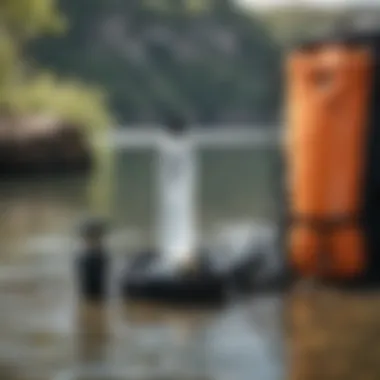
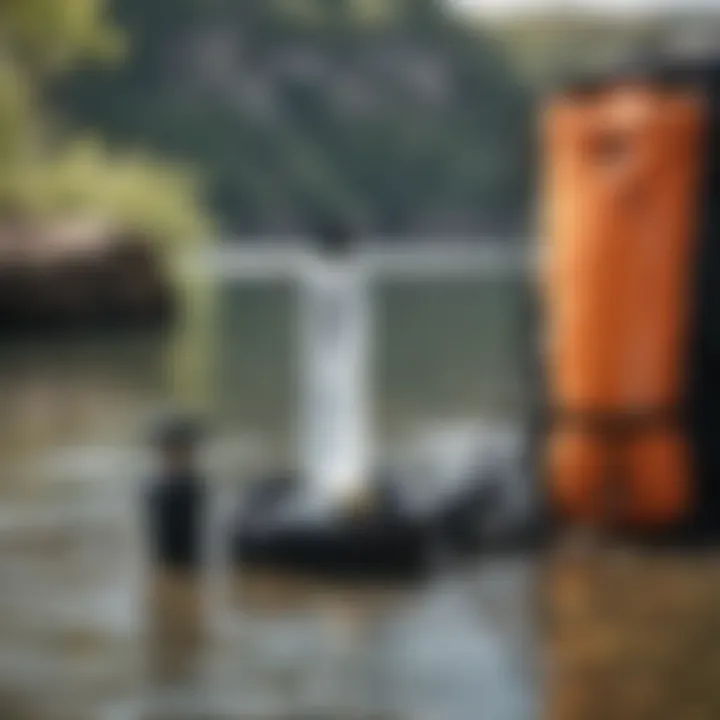
Conditioning and strength training play crucial roles in preventing cramps in watersports. Building muscle strength and endurance is like laying a solid foundation for a house; without it, the structure can easily crumble. Engaging in a mixed training regime that includes resistance activities targets the muscles used most during watersports. By doing so, athletes can enhance their stamina, which reduces the likelihood of muscle fatigue that frequently leads to cramps.
Key points to consider when incorporating conditioning into your routine:
- Focus on muscle groups: Identify the primary muscles engaged in your sport, whether it be surfing, kayaking, or sailing, and design workouts accordingly.
- Gradually increase intensity: Start with moderately challenging exercises and develop intensity over time. This phased approach helps prevent overwhelming the muscles.
- Cross-training benefits: Diversifying your training may also keep things fresh and engaging while strengthening various muscle groups, improving overall functionality.
Regular Stretching Practices
Regular stretching is a vital aspect of a well-rounded training program. Think of it as a warm hug for your muscles; it increases flexibility and enhances muscle recovery, both crucial for muscle health. Establishing a routine that includes stretching exercises can significantly mitigate the risk of cramping during watersport activities.
Consider integrating these practices into your daily routine:
- Dynamic stretches before activity: Engage in light movements that mimic the motions of your sport to prep the muscles.
- Static stretching after training: Focus on holding stretches for each major muscle group for about 30 seconds. This helps to improve flexibility over time.
- Incorporate yoga or pilates: These practices not only aid in flexibility but also build core strength, providing stability during watersports.
Monitoring Training Intensity
Understanding and monitoring your training intensity is often overlooked but integral to preventing cramps. The fine line between pushing your limits and overdoing it is sometimes blurry. This is especially true during watersports, where fatigue can sneak up on you. Already engaged in a taxing activity like paddling requires conscious insight into how your body feels.
Practical tips for monitoring training intensity include:
- Listen to your body: Pay attention to pain signs—if fatigue sets in, consider easing back on the intensity.
- Set realistic goals: Avoid bite-sized goals that could lead to overexertion. Break your training into manageable sessions to provide enough recovery time.
- Keep a training log: Jot down your activities and how you felt during and after each session. This can lead to greater self-awareness and adjustments to prevent cramping in the future.
"An ounce of prevention is worth a pound of cure." By investing time and effort into these long-term solutions, water sport enthusiasts can significantly enhance their resistance to cramps, ensuring a more enjoyable experience on the water.
Recognizing the Symptoms of Cramps
Understanding the symptoms of cramps is a crucial aspect when it comes to maintaining performance and enjoyment in watersports. If you're not aware of the signs that are knocking on your door, you might overlook the discomfort until it's too late. Cramps can turn exhilarating adventures into challenging battles if they're not identified early. So, let's break down what to look for.
Onset Indicators
Recognizing early indicators of cramping is vital. You often feel mild tightness or an unusual sensation in the muscle that doesn’t quite sit right. You might notice subtle signs like a distinct tingling or a slight pull. Here are some specific indicators to keep an eye out for:
- Muscle Tension: If you start to feel tension building up in the muscles, it’s a sign your body might be gearing up for a cramp.
- Discomfort or Pain: A slight pain—sometimes, it feels like a warning sign. If you feel sudden discomfort, particularly in your calves, thighs, or abs, pay attention.
- Fatigue: An increase in muscle fatigue, especially after prolonged physical activity, should be your red flag. When exhaustion sets in, cramps are often not too far behind.
Keeping a watchful eye on these indicators can make all the difference in preventing cramps from completely derailing your experience.
Cramps vs. Other Muscle Issues
Differentiating cramps from other muscle issues can be tricky but it is completely necessary. While both cramping and other muscle discomforts, like strains or pulls, can cause pain, they often have distinct characteristics. Here are some aspects to consider when faced with muscle discomfort:
- Location of Pain: Cramps typically manifest in specific areas like the calves or thighs, whereas strains can occur in a broader spectrum. Understanding where the pain is emanating from can help pinpoint the issue.
- Duration: Cramps often present sharp, severe pain but last for a shorter duration. In contrast, muscle strains can lead to prolonged discomfort that may after activity.
- Movement Limitations: When a cramp strikes, the muscle may lock up, making it hard to move, while with another muscle injury, you might still have some range of motion but feel a notable pain.
"Being able to pinpoint the type and source of muscle issues can make it easier to address and prevent future occurrences."
By familiarizing yourself with these distinctions, you’ll be well equipped to recognize and respond to cramps appropriately. Knowledge of these symptoms allows watersport enthusiasts to take actionable measures before issues escalate, thus enhancing the overall experience on the water.
When to Seek Medical Attention
Recognizing when to seek medical attention is a crucial aspect that shouldn't be brushed aside, especially when it comes to managing cramps during watersports. While cramps can often be remedied with basic techniques, there are scenarios where one's health might be at stake, necessitating professional help. Understanding these distinctions can make a significant difference in enhancing both safety and performance.
Persistent Pain Concerns
Cramps are usually temporary; they might come and go like bad weather. However, if pain lingers long after the initial cramp has dissipated, it signals that something else could be going on. If you're feeling pain that doesn't shift or eases up after rest, it might just be time to consult a healthcare professional. There's a chance you could be dealing with muscle strains or even more complex issues like tears in the muscle fibers.
Some signs that should raise flags include:
- Swelling or bruising: If the area swells up like a balloon or bruises, it could be a sign of a more serious injury.
- Loss of strength: When simple movements become a chore or feel impossible.
- Increased discomfort during activity: A cramp should settle down once you pause; if it intensifies, that’s concerning.
In brief, if the pain feels abnormal and doesn’t ebb away, don’t hesitate. Ignoring it could potentially lead to long-term problems.
Underlying Health Conditions
Another layer to consider is the possibility of underlying health conditions that may predispose someone to cramps. Conditions like kidney disease, diabetes, or thyroid dysfunction can play havoc with the body’s muscle function, electrolyte balance, and overall physical health. If you know you have such underlying issues, it’s wise to keep that in mind when dealing with muscle cramps.
Also, medications or supplements you might be on could contribute to cramping. For instance, diuretics can lead to dehydration, paving the way for cramps to latch onto the unsuspecting athlete. In these cases, it's smart to have an open dialogue with a healthcare provider about what you're experiencing.
Factors that could warrant a check-up include:
- Infrequent but intense cramps: These could point to conditions that haven't been diagnosed yet.
- Cramps occurring alongside other symptoms: If cramps come with heart palpitations, dizziness, or unusual sweating, err on the side of caution.
- Family history of muscle disorders: If someone in your family has dealt with muscle issues, it might be time to see a specialist.
Monitoring your body's responses while engaged in watersport activities is vital. If things seem off, don't second-guess your instincts. Knowing when to seek help can be the difference between a minor setback and a major ordeal.
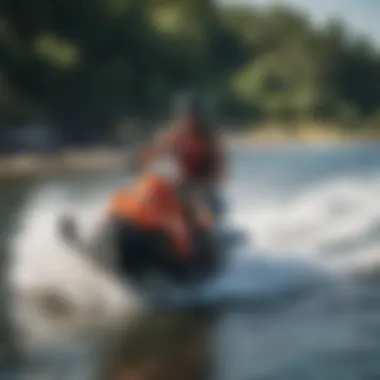

Practical Application in Watersport Activities
When it comes to enjoying watersports, understanding cramps and how to deal with them is crucial. Watersports enthusiasts often find themselves pushing their physical limits, and cramps can interrupt that blissful connection with the water. This section’s goal is to provide clear insights on the various ways cramps manifest in different watersport activities and how participants can effectively manage or prevent them.
Each activity has its own unique characteristics, which influences how cramps may occur. For instance, the posture in surfing is different from that in kayaking or sailing, and each requires a distinct approach to address muscle fatigue or cramps.
Cramps in Surfing
Surfing is a thrilling sport that requires agility and strength. Many surfers spend lengthy sessions riding the waves, leading to muscle fatigue and dehydration. Cramps can often hit unexpectedly, especially in the legs or lower back due to prolonged paddling and that classic squat position on the board.
- Prevention Tips:
- Take regular hydration breaks, especially in hot weather. Water does wonders but consider electrolyte-rich drinks too.
- Engage in open-water practice to condition your muscles for balance and strength.
- Post-surf stretches focusing on hamstrings, quadriceps, and lower back can also help maintain flexibility.
A good strategy here is to stretch for about 10 minutes before hitting the waves. This warm-up routine can significantly lower the risk of cramps while enhancing performance when you catch that perfect wave!
Cramps in Kayaking
Kayaking puts a different spin on muscle engagement. The repetitive motions of paddling can lead to muscle strains or cramps, particularly in the arms, shoulders, and back.
- Key Insights:
- Ensure proper kayak seating and posture. Avoid slumping, which can add additional stress and tension to the muscles.
- Integrate shoulder and arm stretches into your routine; a simple side bend can enhance mobility and prevent tightness.
- If you feel a cramp coming on, stop paddling and stretch or massage the affected area.
Many kayakers have found that breaking up long paddling sessions with brief rest periods makes a world of difference. A quick stretch during these pauses can keep cramps at bay.
Cramps in Paddleboarding
Paddleboarding combines surfing and kayaking elements, and with it comes the risk of cramps as well. Standing for long periods while maneuvering can tax your legs and core. The balance required can also lead to unexpected strain in various muscle groups.
- Strategies for Relief:
- Alternate between standing and kneeling or sitting on the board. This change in position can relieve stress on certain muscle groups.
- Regularly hydrate, as the balancing act can increase energy expenditure and cause faster fluids loss.
- Engage your core muscles during paddling to alleviate unnecessary stress on your legs.
It's essential to tailor your practices to include core and leg strengthening exercises that prepare you physically for the demands of paddleboarding.
Cramps in Sailing
Sailing can be a strenuous affair, especially during competitive events where you're continuously adjusting and handling ropes. The nature of the activity often involves quick and precise bodily movements, which can trigger cramps in the legs and forearms.
- Tips for Smooth Sailing:
- A well-fitted life jacket can help you maintain proper posture and alleviate tension during a race or training session.
- Rotate your tasks on the boat. Shift from handling sails to navigating occasionally.
- Utilize brief warm-ups and cooldowns, especially when shifting between weekend outings.
Sailors who have incorporated regular strength and flexibility routines often report not only fewer cramps but also better overall performance.
Remember, recognizing your body’s responses during these watersport activities is pivotal. Whether you’re riding waves, navigating a kayak, balancing on a paddleboard, or steering a sailboat, being proactive in addressing cramps will significantly improve your experience on the water.
The End and Final Thoughts
Navigating watersports comes with its own set of challenges, particularly when it comes to cramps. These sudden muscle contractions can become quite the adversary, creating a barrier to performance and enjoyment in aquatic activities. Understanding how to effectively manage and alleviate cramps is not just a matter of comfort; it's crucial for maintaining the joyful spirit of your favorite water-based pursuits. This article has sifted through a wealth of information, pinpointing prevention strategies, remedies, and practical advice aimed at keeping those pesky cramps at bay.
Recapping key elements, it’s clear how crucial hydration is. Water, along with electrolytes, forms the foundation for muscle function. Additionally, nutritional awareness while engaging in physical activities can make all the difference, as the right fuel can stave off fatigue and muscle cramps. This serves as a reminder that paying attention to one’s body and its signals is vital.
*
Effective management of cramps not only enhances performance but also significantly uplifts the overall experience in watersports.
*
Consideration of warming up before heading into a paddle, a ride, or a race is equally invaluable. A well-designed warm-up and cool-down routine invites blood flow into the muscles and prepares them for the tasks ahead. It sets athletes, instructors, and adventurers up for success, reducing the chances of unruly cramps that spoil the fun.
In closing, embrace these insights as tools in your watersport toolkit. Whether you're a seasoned pro or a weekend warrior, taking the time to understand and implement remedial strategies can change the game. The waters await, full of potential and pleasure, unencumbered by the threat of cramps.
Recap of Key Points
To summarize the crucial strategies discussed:
- Hydration is essential. Regularly drink water and consider electrolyte replenishment, especially during prolonged activities.
- Nutrition matters. Eat balanced meals that are rich in vitamins and minerals, with a particular focus on magnesium and potassium, known for their role in muscle contraction.
- Warm-up correctly. A good warm-up enhances flexibility, reduces soreness, and prepares the body for exertion, making cramps less likely.
- Recognize when to stop. Listening to your body’s cues prevents overexertion and ultimately avoids cramps.
- Techniques for alleviation. Whether stretching, using heat or cold packs, or getting a gentle massage, these can help relieve a cramping muscle in the short term.
Encouragement for Preventive Practices
Adopting preventive practices is akin to a well-laid foundation; it ensures a sturdy structure when dived into watersports. Emphasizing preemptive measures allows for a proactive approach in combatting cramps. Make it routine to hydrate adequately before and during activities, pay close attention to your diet, and don’t skimp on those warm-up exercises.
Consider establishing a checklist before each outing:
- Grab your water bottle to keep hydration in check.
- Pack a light snack, perhaps a banana or some nuts, to provide energy without feeling heavy.
- Allocate time for stretching your muscles fully before launching into any high-energy exertion.
By embedding these practices into regular habits, you not only enhance your performance but also nurture your love for the water. Stay mindful, stay prepared, and enjoy the fluid movement through your aquatic adventures.















